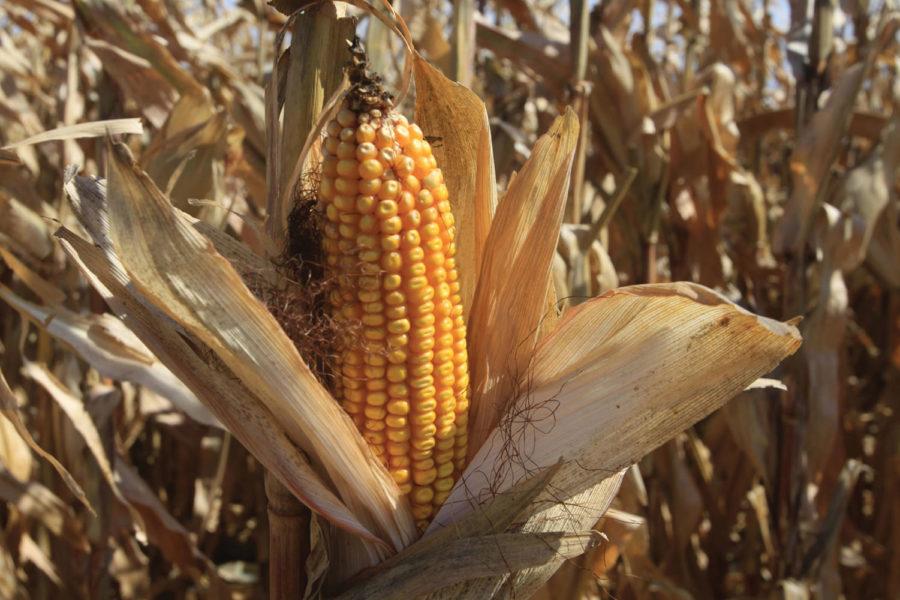Croptimism: Iowa farmers surprised by this year’s crop yields
October 10, 2012
With harvest season well under way, Iowa farmers are finding a pleasant surprise as the numbers roll in: Things are not as bad as they thought.
At the end of summer when the drought was in full force, farmers had dire predictions coming their way. Original estimates from the U.S. Department of Agriculture had the national yield at 122.8 bushels per acre, which is 24.4 bushels lower than last year’s average.
Those numbers would have put this year’s harvest at the lowest average yield in nearly 20 years, according to USDA statistics.
The lower yields would have put the state slightly above the national average, but still significantly lower than the past few years. In 2011, Iowa produced 172 bushels per acre, the current numbers show Iowa producing 140 bushels per acre.
To some, 140 bushels per acre seem very low, compared to the 172 bushels in 2011 and the 182 bushels in 2009, which was the highest yield in Iowa’s history.
In reality, before the early 2000s, 140 bushels was a high average. But thanks to hybrids and other factors the plants per acre has steadily increased, giving corn production an edge and taking some of the sting out of a drought year.
According to Roger Elmore, professor of agronomy at Iowa State and extension corn specialist, “yields are going up over two bushels per acre, per year, in Iowa. So every year the yield trend… is going up by about two to 2.5 [bushels].”
Elmore says that if we look just at this trend, a normal 2012 should have produced around 180 bushels per acre.
The 140 bushels that we have so far this harvest season is considerably lower than what many had hoped for, about 22 percent, but Elmore said, “even though our yields are low, some people are very happy with what they’re getting in the field because they thought it was going to be far worse.”
A higher corn yield was not the only factor that helped farmers through this tough time, however. As Mike Duffy, professor of economics at Iowa State and recipient of many awards in agricultural research, said, “We came in [to the drought] very strong, in a strong financial position…For most of the crop producers, they were covered by insurance.”
Commodity prices also played a pivotal role in Iowa’s agricultural survival, Duffy said. “The big key is that usually droughts tend to be more localized… this time everybody got hit.”
Because the drought was so widespread, corn prices went much higher than they would have if other states been able to pick up the deficit. In fact, Duffy said, “Illinois, Indiana, Ohio… they were hit harder by the drought, and so they had more trouble with the actual yield.”
“The ones that will have the biggest problem are going be the livestock producers, and I think especially the pork producers,” Duffy said. Though the high prices will cover the deficit for the corn industry, it leaves others susceptible.
This year’s drought may not have left Iowa as crippled as some feared, but Duffy believes we are not out of trouble yet. “Where we’ll be in big trouble is if we don’t get the groundwater replenished. That’s what people are starting to look at and think about is, what will happen next year.”







